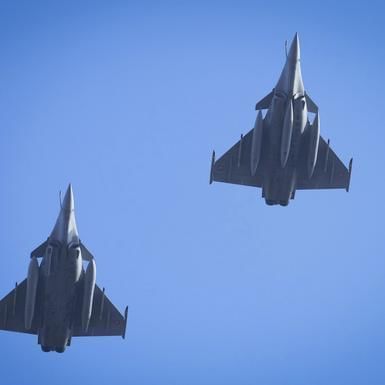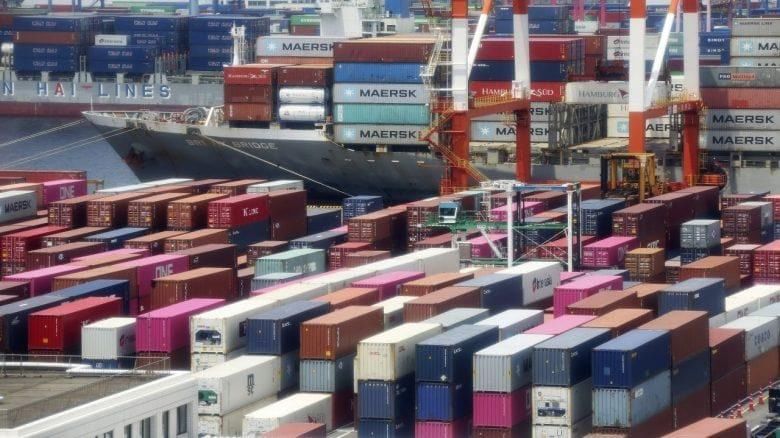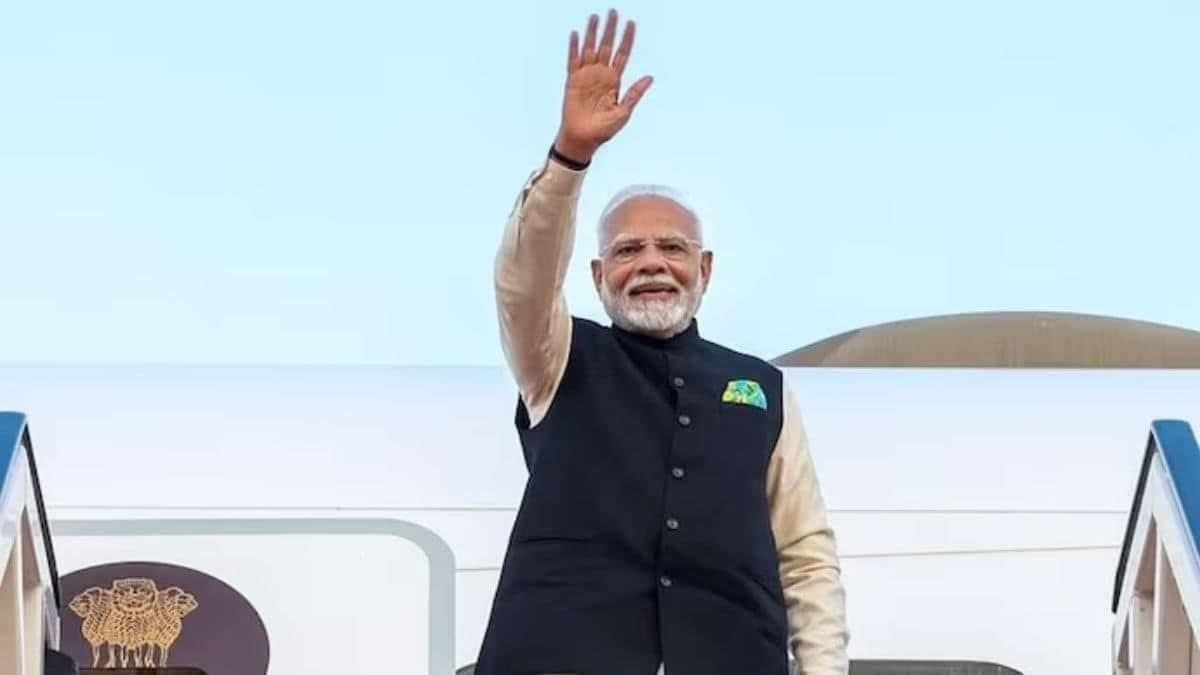UPSC Daily Current Affairs: 7th July 2025 | Current Affairs & Hindu Analysis: Daily, Weekly & Monthly PDF Download
GS2/International Relations
The New Battle Challenge of China-Pakistan Collusion
Source: The Hindu
 Why in News?
Why in News?
Operation Sindoor, conducted from May 7 to 10, has highlighted a significant shift in regional geopolitics, marked by an unprecedented collaboration between China and Pakistan on the battlefield. This change has been confirmed by Lieutenant-General Rahul R. Singh, Deputy Chief of Army Staff, and draws attention to the evolving nature of the China-Pakistan strategic relationship from a traditional partnership to active operational cooperation.
Key Takeaways
- The nature of China-Pakistan collusion has evolved from tacit support to active tactical partnership.
- China's operational support during conflicts represents a strategic shift in its involvement with Pakistan.
- India faces a new strategic normal, with implications for its military and diplomatic strategies.
Additional Details
- Strategic Shift: Historically, China's involvement in India-Pakistan conflicts was limited to diplomatic support. However, Operation Sindoor showcased a more direct engagement, providing real-time ISR (Intelligence, Surveillance, and Reconnaissance) capabilities and tactical interoperability.
- Digital Collusion: Chinese state media and digital influencers played a role in amplifying Pakistani propaganda, shaping global perceptions of India as the aggressor and delegitimizing India's military actions.
- New Strategic Normal: The dynamics of deterrence between India and its adversaries have shifted, complicating India's strategic calculations and necessitating a reassessment of its military response options.
- China's Arms Industry: The conflict has validated Chinese military platforms in actual combat, enhancing their global arms market leverage and solidifying Pakistan's military capabilities.
- Two Live Borders: India now faces threats on both its western and northern fronts, requiring simultaneous military readiness due to ongoing tensions in both regions.
The events surrounding Operation Sindoor and the resultant China-Pakistan collusion represent a critical juncture for India. No longer can such collusion be regarded as a theoretical concern; it is an operational reality. As India navigates this increasingly complex environment, its responses will play a crucial role in maintaining regional stability and countering the integrated strategic threat posed by its adversaries.
GS2/Governance
The ‘Khelo Bharat Niti’ As a Beacon for Indian Football
Source: The Hindu
 Why in News?
Why in News?
India is experiencing a transformative shift in its sports landscape, driven by an ambitious plan to host the 2036 Olympics and a renewed commitment to sports development. Central to this movement is the recently launched Khelo Bharat Niti 2025, a groundbreaking national sports policy aimed at integrating sports into India’s development journey, with a particular focus on football, diaspora talent, and educational alignment.
Key Takeaways
- Khelo Bharat Niti 2025 aims to position sports as a key pillar in India's development.
- The policy includes a comprehensive framework for football development with five strategic pillars.
- There is a focus on utilizing talent from the Indian diaspora to enhance the national football team.
Additional Details
- Five-Pillar Approach:The policy emphasizes the following pillars for football development:
- Sports Excellence: Enhancing the global image of India’s national football team.
- Sports for Social Development: Using football to promote inclusion and social growth.
- Sports for Economic Growth: Leveraging football to create jobs and stimulate economic activity.
- Sports as a People’s Movement: Encouraging community participation in sports.
- Sports in Education: Integrating football into school curricula.
- OCI Talent: The policy acknowledges the potential of Overseas Citizens of India (OCI) to contribute to the national team, despite legal challenges regarding dual citizenship.
- Integration with Education: Schools are pivotal in the development pipeline for young footballers, aligned with the National Education Policy (NEP).
The Khelo Bharat Niti 2025 represents a strategic shift in how India approaches sports, particularly football, by fostering a grassroots revolution and integrating sports with education. This policy offers hope for a more inclusive and prosperous future for Indian football.
GS2/International Relations
India Opposes Amendments to Plant Treaty over Sovereignty Concerns
Source: The Hindu
Why in News?
The Union government and farmers' groups in India have expressed significant concerns regarding proposed amendments to the International Plant Treaty. They warn that these changes may dilute farmers' rights and undermine India's sovereignty over its plant genetic resources.
Key Takeaways
- India has raised objections to amendments to the International Treaty on Plant Genetic Resources for Food and Agriculture (ITPGRFA).
- The proposed amendments could compromise farmers' rights and seed sovereignty in India.
Additional Details
- About the Plant Treaty:The International Treaty on Plant Genetic Resources for Food and Agriculture (ITPGRFA) is a legally binding agreement established in 2001 under the FAO. Its objectives include:
- Conservation of plant genetic resources.
- Promotion of sustainable use of these resources.
- Ensuring fair and equitable sharing of benefits arising from their use, especially in research and development.
- Recent Negotiations: The 10th session of the Governing Body of the Plant Treaty is taking place in Peru from July 7 to 11, 2025. An Ad Hoc Open-Ended Working Group is examining amendments to expand the Multilateral System (MLS) to include all Plant Genetic Resources for Food and Agriculture (PGRFA).
- Core of the Concern:Farmers' organizations, including the Bharath Beej Swaraj Manch and Rashtriya Kisan Mahasangh, argue that:
- The proposed expansion would subject all plant genetic material to international access frameworks.
- This contradicts the treaty's original mandate, which limited access to a specific list of crops critical for food security.
- India's sovereign rights over seeds and plant varieties would be at risk.
- Farmers' rights to save, use, exchange, and sell seeds may be weakened under a globally standardized material transfer system.
- Institutional Response: The Indian Council of Agricultural Research (ICAR) has assured that national interests will be protected. Sunil Archak, Principal Scientist at ICAR, is representing India in the negotiations.
- States' Role: Kerala has highlighted that agriculture is a State subject under Schedule VII of the Indian Constitution. The state criticized the lack of consultation with State Governments and farmers, warning that amendments could undermine the role of State Biodiversity Boards.
- Broader Implications:The proposal to include all PGRFA in the MLS could:
- Impact India's ability to regulate access to indigenous germplasm.
- Reduce incentives for local innovation in seed conservation and development.
- Allow foreign entities to access India’s genetic resources without adequate benefit-sharing.
- Limit India's capacity to customize access rules based on the germplasm's type or origin.
In conclusion, India's opposition to the proposed amendments reflects deep concerns regarding sovereignty, farmers' rights, and the potential long-term effects on its agricultural policy and practices.
GS3/Defence & Security
AI Warfare and Multi-Domain Ops: Battlegrounds of the Agentic Age
Source: Indian Express
Why in News?
The landscape of warfare is experiencing a profound shift due to the integration of artificial intelligence (AI) in military strategies, particularly by nations like China. This evolution presents significant strategic challenges for countries such as India, emphasizing the urgent need to enhance technological and energy capabilities in the face of these developments.
Key Takeaways
- China is leveraging AI for advanced military applications, including autonomous weapons and decision-making processes.
- The collaboration between China and Pakistan in AI technology raises security concerns for India.
- Energy infrastructure, particularly nuclear power, is crucial for sustaining AI-driven military operations.
- India's current nuclear energy capacity is insufficient to support future defense needs.
Additional Details
- China's Early Lead in Military AI Deployment: The People's Liberation Army (PLA) has incorporated AI into its military functions, enhancing artillery systems and drone capabilities for precise targeting.
- China-Pakistan AI Collaboration: The establishment of Pakistan's Centre of Artificial Intelligence and Computing, with China's assistance, poses a strategic threat by focusing on cognitive electronic warfare.
- Energy: The Hidden Backbone of Future AI Warfare: The effective operation of AI technologies in military contexts requires robust energy resources. Nuclear energy is increasingly viewed as essential for powering AI data centers.
- India’s Nuclear Shortfall: With a nuclear power capacity of only 7.5 GW, India faces significant limitations in developing AI-driven defense capabilities. Experts suggest positioning Small Modular Reactors (SMRs) to support AI infrastructures.
- Global Precedents: Examples from Ukraine and Israel illustrate the practical applications of AI in military operations, demonstrating its potential to revolutionize warfare.
In conclusion, as AI continues to shape modern warfare, it is imperative for India to bridge technological and energy gaps to remain competitive in the evolving landscape of multi-domain operations.
GS3/Economy
How India’s Foreign Trade Has Been Invisibilised
Source: Indian Express
 Why in News?
Why in News?
This article discusses the critical shift in India’s foreign trade narrative, emphasizing the growing importance of intangible trade components, known as "invisibles," which have now surpassed merchandise trade in influencing the country's external balance.
Key Takeaways
- Invisibles, including services and remittances, have become central to India’s foreign trade narrative.
- India’s merchandise exports have experienced fluctuations, while invisible receipts have shown consistent growth.
- Current trade policies predominantly focus on physical goods, neglecting the significance of services and intangibles.
Additional Details
- India’s Evolving Trade Landscape: The trade dynamics in India are shifting from tangible goods to intangible services and remittances, which are now crucial for the country's economic health.
- Merchandise Exports: India’s merchandise exports grew from $66.3 billion in 2003-04 to $318.6 billion in 2013-14, but saw a decline to $441.8 billion by 2024-25 after a post-Covid peak.
- Invisible Receipts: These have increased from $53.5 billion in 2003-04 to $576.5 billion in 2024-25, showcasing resilience and long-term stability.
- Trade Negotiations: Current negotiations with the U.S. remain fixated on tangible goods, overlooking the potential of India’s services sector.
- Economic Resilience: India’s invisibles have remained robust against global economic shocks, contrasting with the volatility of merchandise trade.
- India vs. China: China maintains a significant goods trade surplus, while India’s strength lies in its services, which include software and professional services.
In summary, India's trade narrative needs to be redefined to reflect the reality of an economy increasingly driven by intangible assets. Recognizing the importance of invisibles is essential for shaping future trade policies and enhancing India's global economic engagement.
GS1/Geography
Seine River: A Major Waterway in France
Source: France 24
 Why in News?
Why in News?
French authorities have recently permitted public swimming in the Seine River for the first time since 1923, highlighting a significant change in public access to this iconic waterway.
Key Takeaways
- The Seine River is a major waterway in northern France.
- It is the second-longest river in France, measuring approximately 777 km (483 miles).
- The river supports commercial navigation and provides drinking water for Paris.
Additional Details
- Overview: The Seine River flows through some of France's most vital cultural and economic regions.
- Source and Elevation: It originates from the Langres Plateau in Burgundy, near Source-Seine, at an elevation of about 444–471 meters above sea level.
- Course Through France: The river flows northwest, passing through regions like Burgundy and Champagne, and cities including Troyes and Paris.
- Path Through Paris: In Paris, the Seine winds through the city center for about 13 kilometers, forming notable islands such as Île de la Cité and Île Saint-Louis.
- Tributaries: Significant tributaries include the Marne, Yonne, Aube, and Oise rivers.
- Drainage Basin and Rainfall: The Seine's drainage basin covers 76,000–79,000 square kilometers, receiving moderate rainfall of 650–750 mm annually.
- Mouth and Termination: The river empties into the English Channel between Le Havre and Honfleur, located on the Normandy coast.
- Economic Role: The Seine is crucial for commercial navigation, especially through Rouen and Le Havre, and supplies about 50% of Paris's drinking water.
This new initiative to allow swimming in the Seine marks a remarkable shift in the relationship between urban populations and their waterways, emphasizing the importance of environmental management and public health.
Consider the following pairs: River Flows into
- 1. Mekong - Andaman Sea
- 2. Thames - Irish Sea
- 3. Volga - Caspian Sea
- 4. Zambezi - Indian Ocean
Which of the pairs given above is/are correctly matched?
- Options: (a) 1 and 2 only (b) 3 only (c) 3 and 4 only* (d) 1, 2 and 4 only
GS3/Economy
India Ranks 4th Most Equal Society According to World Bank
Source: TOI
Why in News?
As of 2025, India has been recognized as the fourth most equal country in terms of income distribution, as reported in the World Bank’s Spring 2025 Poverty and Equity Brief.
Key Takeaways
- India's Gini Score: 25.5 in 2022-23, indicating strong income equality.
- 171 million people moved out of extreme poverty between 2011 and 2023.
- India outperforms all G7 and G20 nations in terms of income equality.
Additional Details
- About the World Bank’s Spring 2025 Poverty and Equity Brief: This biannual publication provides an analysis of poverty, inequality, and shared prosperity using comprehensive data from household surveys and national datasets.
- Gini Index: A measure of income distribution equality, where a score of 0 indicates perfect equality and 100 indicates perfect inequality. India's score of 25.5 reflects significant equality.
- Poverty Headcount Ratio: Indicates the percentage of the population living below poverty lines. In 2022-23, 2.3% of the population lived below $2.15/day, and 5.3% below $3/day.
- Shared Prosperity Premium: Assesses if the bottom 40% of the population is experiencing growth at a rate higher than the average.
The Spring 2025 report highlights India's remarkable progress in reducing poverty and improving income distribution, making it a pivotal example for developing nations in post-pandemic recovery and equity in welfare policies.
Consider the following statements:
- 1. The repo rate is the rate at which other banks borrow from the Reserve Bank of India.
- 2. A value of 1 for Gini Coefficient in a country implies that there is perfectly equal income for everyone in its population.
Which of the statements given above is/are correct?
- Options: (a) 1 only (b) 2 only* (c) Both 1 and 2 (d) Neither 1 nor 2
GS2/International Relations
India's Five-Nation Tour: Strengthening Ties with the Global South
Source: The Hindu
 Why in News?
Why in News?
Prime Minister Narendra Modi's recent diplomatic tour encompassing Ghana, Trinidad and Tobago, Argentina, Brazil, and Namibia marks a pivotal shift in India's foreign policy, reflecting an intention to deepen engagement with the Global South.
Key Takeaways
- India and Ghana have upgraded their diplomatic relations to a Comprehensive Partnership, aiming to establish Ghana as a vaccine hub for West Africa.
- An MoU has been signed focusing on pharmaceutical cooperation to enhance access to quality generic medicines.
- India is expanding collaboration with Argentina on critical minerals and exploring its extensive shale gas and oil reserves.
Additional Details
- Renewed Focus on Global South: India seeks to create a more balanced global system by strengthening ties with developing countries, as exemplified by its engagements with Trinidad and Tobago.
- Shared Historical Bonds: Many Global South nations, including India, share a legacy of colonialism and have supported movements such as the Non-Aligned Movement. India has co-founded groupings like IBSA and BRICS to advocate for Global South interests.
- India-led Global Initiatives:
- India's pharmaceutical diplomacy during COVID-19, under the Vaccine Maitri initiative, has supplied vaccines to over 70 countries.
- The International Solar Alliance (ISA) promotes clean energy projects in developing nations.
- India shares its expertise in digital governance through initiatives like Aadhaar and UPI, empowering other countries with digital infrastructure.
- Diaspora's Role: The Indian diaspora acts as cultural and political bridges, enhancing soft power and fostering economic collaboration, as seen in their influence on U.S.-India relations.
In conclusion, India's renewed focus on the Global South through strategic partnerships and initiatives showcases its commitment to a more inclusive global order, leveraging its diaspora and collaborative efforts to address common challenges.
GS2/Governance
Transforming Indian Healthcare - Achievements and Milestones (2014–2025)
Source: The Hindu
Why in News?
India’s healthcare system has undergone significant transformation from 2014 to 2025, fueled by strategic policy interventions, heightened political commitment, increased funding, and innovative technology solutions. These initiatives aim to develop a healthcare system that is affordable, accessible, equitable, and of high quality, in line with the UN Sustainable Development Goals (SDG-3) and national objectives under Ayushman Bharat and the National Health Mission (NHM).
Key Takeaways
- Substantial improvements in healthcare infrastructure and accessibility.
- Significant decline in maternal and infant mortality rates.
- Increased government health expenditure and reduced out-of-pocket expenses.
- Introduction of innovative healthcare programs and digital solutions.
Additional Details
- Healthcare in 2014 - Challenges and Gaps:
- Deficiencies in infrastructure, including a shortage of primary health centers (PHCs) and diagnostic facilities.
- Human resource crisis with inadequate healthcare professionals.
- Issues with service quality, including limited access and high out-of-pocket expenses (OOPE).
- Vision Shift - From Illness to Wellness:
- Adoption of a proactive approach focusing on preventive and promotive care.
- Policy frameworks such as the National Health Mission driving systemic reform.
- Key Pillars of Transformation:
- Strengthening Primary Healthcare: Over 1.77 lakh Ayushman Arogya Mandirs established.
- Telemedicine Services: Initiatives like eSanjeevani and Tele-MANAS to provide remote consultations.
- Maternal and Child Health Improvements: Significant reduction in maternal mortality and infant mortality rates.
- Tackling Non-Communicable Diseases (NCDs): Mass screenings conducted for hypertension, diabetes, and cancer.
- Universal Immunization: Mission Indradhanush vaccinated millions, alongside disease elimination efforts for polio and malaria.
- Healthcare Financing and Affordability:
- Government health expenditure increased from 1.13% to 1.84% of GDP.
- OOPE reduced from 62.6% to 39.4%.
- Initiatives like the PM National Dialysis Programme benefitting millions.
- Infrastructure Expansion and Human Resource Development:
- PM Ayushman Bharat Health Infrastructure Mission launched to enhance health infrastructure.
- 5.23 lakh health workers added, including Community Health Officers bridging community and clinical services.
In conclusion, India's healthcare evolution from 2014 to 2025 illustrates a significant shift towards a wellness-focused system, supported by innovative policies and digital advancements. These foundations are crucial for achieving Universal Health Coverage (UHC) and the health-related Sustainable Development Goals (SDGs) by 2030.
GS3/Science and Technology
How Heat Led to Protocells Formation on Earth
Source: The Hindu
Why in News?
A recent study published in Nature Physics suggests that warm volcanic rock surfaces may have played a crucial role in concentrating organic molecules within watery cracks, potentially triggering life-like chemistry. This offers insights into how protocells could have formed without membranes before the advent of life.
Key Takeaways
- Protocells are primitive, cell-like structures that may represent early precursors to biological cells.
- They provided a space for early chemical interactions despite lacking complex cellular components.
What are Protocells?
- Overview: Protocells are believed to be early forms of life, functioning as bubbles that facilitated chemical reactions.
- Lack of Complexity: These structures did not possess organelles or DNA but could retain essential molecules like RNA and amino acids.
- Membrane Role: They often formed simple membranes, allowing molecules to remain contained and interact more efficiently, promoting reactions like protein synthesis.
- Importance: Protocells illustrate how basic chemistry could evolve into biology, serving as a bridge between non-living and living systems.
History of Formation of Protocells
- Early Earth Conditions: Over 3.5 billion years ago, Earth's surface featured warm water pools and volcanic cracks rich in organic molecules produced by natural processes, such as lightning.
- Compartmentalization: The initial step towards life involved concentrating useful molecules, allowing them to react and leading to the emergence of bubble-like protocells.
- Old Theories: In the 1920s, scientists Oparin and Haldane theorized that life originated in a "primordial soup" through spontaneous chemical reactions in early Earth's oceans.
- Modern Insights: Recent studies indicate that volcanic rock cracks and hydrothermal vents created temperature gradients and water flows that facilitated protocell formation, negating the need for complex membranes.
Key Findings in the 2025 Study
- Lab Setup: Scientists constructed a 170-micrometre chamber with a warm top (40°C) and cool bottom (27°C) to simulate early Earth rock cracks.
- DNA Test: They introduced DNA and a protein synthesis kit (PURExpress). Protein synthesis, demonstrated by the production of green fluorescent protein (GFP), occurred solely in the warm-cool chamber.
- Molecule Gathering: Key ingredients like DNA, magnesium, and phosphate ions were observed to concentrate significantly at the bottom—up to 70 times more than at the top.
- Cell-Like Behavior: The system maintained important molecules while allowing waste to escape, mimicking the selectivity of real cells.
- Big Implication: This research supports the hypothesis that life could emerge in simple natural environments using just heat, flow, and basic chemicals—long before the development of fully functional cells.
Consider the following statements:
1. The Earth’s magnetic field has reversed every few hundred thousand years.
2. When the Earth was created more than 4000 million years ago, there was 54% oxygen and no carbon dioxide.
3. When living organisms originated, they modified the early atmosphere of the Earth. Which of the statements given above is/are correct?
- Options: (a) 1 only
- (b) 2 and 3 only
- (c) 1 and 3 only
- (d) 1, 2 and 3
This information sheds light on the possible origins of life on Earth, illustrating how early chemical processes may have paved the way for the development of living organisms.
|
38 videos|5288 docs|1117 tests
|
FAQs on UPSC Daily Current Affairs: 7th July 2025 - Current Affairs & Hindu Analysis: Daily, Weekly & Monthly
| 1. What are the main challenges posed by China-Pakistan collusion to regional security? |  |
| 2. How does the 'Khelo Bharat Niti' aim to enhance sports infrastructure in India? |  |
| 3. Why does India oppose amendments to the Plant Treaty regarding sovereignty issues? |  |
| 4. What is the significance of AI warfare in multi-domain operations? |  |
| 5. How has India's foreign trade been impacted by recent invisibilization trends? |  |





















